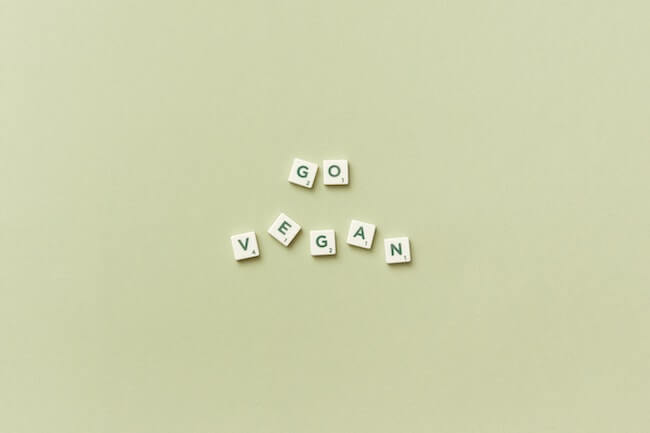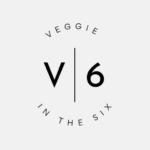Your cart is currently empty!

How to Go Vegan? In theory it’s very simple, don’t consume, purchase or support any animal products or by-products. But the implementation of this simple goal can actually be quite difficult for many people that have lived their whole lives eating meat and dairy products.
But if you are here you have found out why you should go vegan, and that is a big step.
However, with some planning and a willingness to try new things, it is very possible to make the transition to a vegan diet smoothly and successfully.
But before you start, it is important to understand what being vegan entails.
Veganism is more than just a dietary choice – it is a philosophy that seeks to exclude, as far as is possible and practical, all forms of exploitation of, and cruelty to, animals for food, clothing or any other purpose.
This means that in addition to avoiding meat, fish, poultry, and dairy products, vegans also abstain from using products made from animals, such as leather, fur, and wool.
Here is a step-by-step method for going vegan:
Step 1: Educate Yourself

Are you a beginner to going vegan and wondering where you start? Before you make the switch to a vegan diet, it is important to understand the reasons behind it.
There are many benefits to a plant based lifestyle, including improving your health, reducing your carbon footprint, and helping to prevent animal cruelty.
Take some time to research the various aspects of veganism, such as the environmental benefits, the health implications, and the ethical considerations.
This will help you understand the motivations behind veganism and give you a better understanding of the lifestyle you are considering.
Also, you will be tested. When people learn that you are switching to vegan many will try to challenge your decision. Educate yourself so that you know that no, soy is not bad for you, and that with proper planning you will not become deficient in vital minerals and nutrients. Many other people will also be generally curious and want to know more so the more you are informed, the better.
A great way to start is by watching vegan documentaries and reading books on the topic. Also to get to know organizations and communities in your area.
And, know that you are in good company because there are tens of millions of vegans around the world and this number is growing every year.
Step 2: Make a Plan For Going Vegan
Making the the transition to being vegan can be overwhelming at first, so it’s important to have a plan in place.
Start by making a list of the meals you currently eat that are vegan, and then build on that list by trying new vegan recipes.
You can find a wide variety of vegan recipes online or in vegan cookbooks. You can also look up how to veganise some of your favourite meals that contained animal products.
Additionally, it can be helpful to plan your meals in advance and make sure you have the necessary ingredients on hand. This can help prevent last-minute trips to the grocery store or resorting to non-vegan options out of convenience.
* To male meal time a little easier you could sign up for a vegan meal delivery service
Step 3: Find Vegan Alternatives

As a vegan you avoid eating eggs, dairy, meat and using any material from an animal like leather, wool, silk, etc. But building on the last step, finding vegan alternatives is easier than ever because there are many plant-based alternatives to animal-based products, so you don’t have to give up all of your favourite foods.
For example, you can find vegan versions of milk, cheese, and yogurt made from nuts, grains, and legumes. (Checkout our list of vegan essentials)
There are also plant-based meats available, such as tofu, tempeh, and seitan, which can be used as substitutes for meat in a variety of dishes.
With the amount of choices for vegan products that are available these days it is easier than ever to go vegan.There are also more vegan restaurants than ever before so eating out is pretty easy.
Step 4: Be Prepared to Make Some Changes
Going vegan may require you to make some changes to your usual routine. Going vegan doesn’t have to be hard. How hard it seems will depend on each individual but there are ways everyone can make it easier on themselves. One way to make going vegan easier is to prepare yourself for making some changes
For example, you may need to pay more attention to your nutrient intake and ensure that you are getting enough protein, iron, and other nutrients that are commonly found in animal products.
You may also need to be more mindful of eating out and finding vegan options when dining at restaurants or when traveling.
Step 5 of how to Go Vegan: Find Support
Going vegan can be a big change, and it is incredibly helpful to have support from others who are also making the transition or from those who are supportive.
One of the biggest challenges found by vegans when asked about the difficulties of making the change to vegan was family relations and holiday meals.
There are lots of vegan support groups or events with other vegans through social media or online forums.
You can also seek support from a healthcare professional or a registered dietitian who can help you plan a balanced vegan diet and address any concerns you may have.
Step 6: Be Patient with Yourself
Making the switch to a vegan lifestyle can take some time, and it is important to be patient with yourself.
It’s okay if you make mistakes or have slip-ups – it’s all part of the process.
Remember to be kind to yourself and don’t beat yourself up if you have a non-vegan meal or snack. Just try to learn from any mistakes you make and keep working towards your goal of reduced suffering.
Switching to a plant based lifestyle can be a very rewarding and meaningful. I sometimes get asked if I miss meat. My response is always, the only thing that I regret is that I didn’t make the change sooner. By being vegan you are doing a good thing and trying your best to limit animal cruelty, help with climate change and environmental preservation, and possibly make improvements to your overall health.
Step 7(Most Important): Go Vegan
In the end, going vegan is simple; you just stop buying certain things. But in practice, even following all of the previous 6 steps, it can be challenging for a lot of people.
For this reason I think it’s helpful to think of going vegan in stages.
Now, I believe the best way is to just go right away and be totally vegan but in my personal journey it took years. And a lot of other vegans I know it was the same way. So maybe look at it as a progression towards a goal.
We can break down the change in to 6 stages. When you graduate to a new stage you are one step closure to your goal of 100% vegan. Lets look at the stages:
- Stage 1: Include more vegan food in your diet change something you normally have to the vegan version. (ex. if you eat yogurt often switch to a vegan one)
- Stage 2: Eliminate red meat. Just cut it from your diet and eat vegan substitutes instead, or better yet substitute for beans, lentils, tofu or other more healthy vegan protein.
- Stage 3: Eliminate Chicken and all meat except for Fish.
- Stage 4: Eliminate Fish
- Stage 5: Eliminate dairy and eggs.
- Stage 6: Only buy vegan items for your clothing, household, personal care and all other areas. Congratulations you are now vegan!
Again, the faster you can go through these stages the better for the animals, environment and your health. Maybe you can jump a couple stages at a time? Its your journey and we are here to help.
FAQ
Yes they can. There are certain breads that contain milk, eggs and/or honey but many do not. Sourdough for example doesn’t contain any animal products. You just need to be a little more careful and read the ingredients.
Yes! It is better for your health, it will save countless examples of suffering to animals, and it will help sustain our environment.
In simple terms it is a lifestyle of harm reduction. You try to limit harm as much as you can and the biggest ways are from not eating and milk, dairy, eggs or meat and also avoiding any other animal products like leather, wool, silk and more.

Leave a Reply